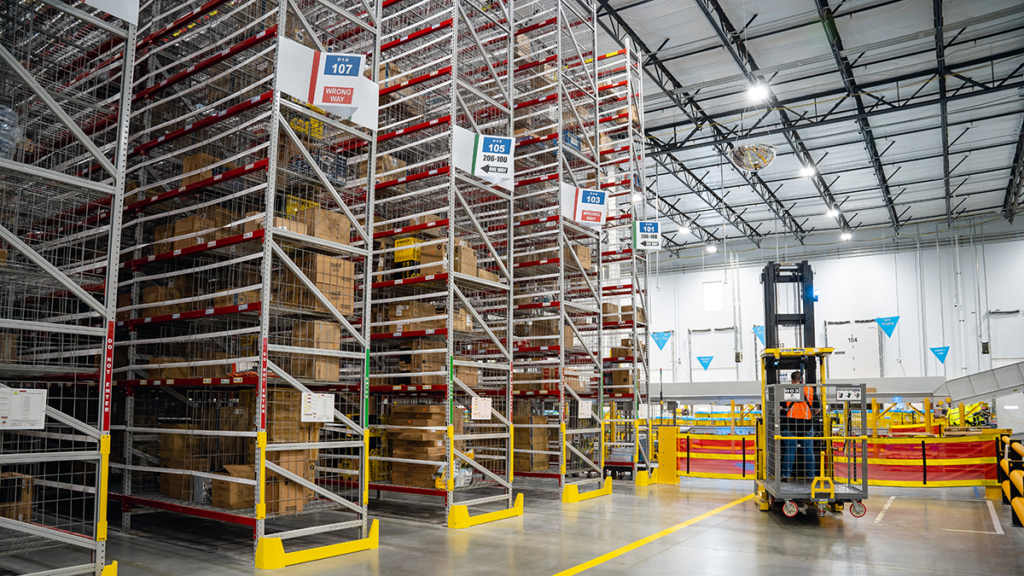Amazon is one of the largest global e-commerce providers. In 2021 alone it delivered 5 billion packages around the world. That’s more than 13 million a day. That’s a lot of picking, packing, and sorting for a warehouse worker. Not only that, but the margin for error can be high, as can the chance of employee workplace injury.
Over ten years ago, Amazon had a vision. Man and machine working together, in harmony.
And with their 2012 acquisition of Kiva, they saw the start of making that dream a reality.
Now, it has over 520,000 robotic drive units, has added over 700 new categories of jobs globally, and has teams of roboticists, engineers, software developers, and other experts pushing its ambition forwards.
The journey started with Proteus, Amazon’s first fully autonomous mobile robot.
Using safety perception and navigation technology developed by Amazon, the robot was programmed to perform its work whilst moving around employees without any safety restrictions.
Eventually the fleet expanded to add robotic arms such as Robin and Cardinal to the team. However, these robotic arms have only been able to redirect packages to different locations before they are sent out for delivery.
Now, Sparrow is changing the status quo – with the aid of machine learning and artificial intelligence, this robotic arm has been designed to handle millions of individual items, and a multitude of surfaces and textures, with a high degree of accuracy.
Sparrow works by using ‘scene comprehension’ in conjunction with camera data and LiDAR. The scene comprehension allows the robot to understand how an object will behave based on its pre-determined knowledge of the structure from Amazon’s inventory.
This comprehension enables the robot to understand its environment, and then to make decisions in real time. This is the first robot from the Amazon fleet to be able to detect, select and handle individual products.
Amazon comments that the advancement of its robotics technology allows them “to work smarter, not harder, to operate efficiently and safely.” It is also hoped that by making such an integral part of its fulfilment process automated, it will drive efficiency whilst keeping up with their customers’ expected standards.
The global heavyweights are also hoping that the machines will eventually take on mundane and repetitive tasks, freeing up their employees to focus their time and energy in other areas such as learning about the technology, upskilling their roles to tech related positions and learning how they can be a part of that team.
Interested in learning more on robotics and AI? Check out our AI and Communications pages, or our sister site, Electronic Specifier where they have a dedicated Robotics page! Or you can always join in the conversation by commenting below or visiting our LinkedIn page.
